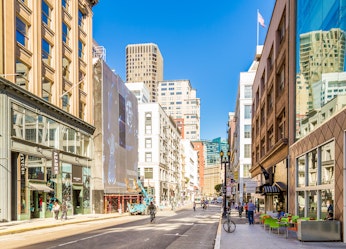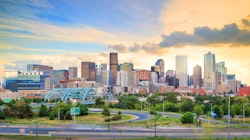

M|O Perspectives
Check back here for our thoughts on the latest developments in our industry.
What You Should Know About the San Francisco Façade Ordinance
Oct 13, 2021
With the deadline fast approaching, now is the time to solidify your understanding of how façade ordinances in San Francisco are evolving. Owners should be aware that recent changes will impact all projects involving exterior work.
Administered by the San Francisco Department of Building Inspections, Ordinance No. 67-16 became effective on June 5, 2016. The San Francisco façade ordinance was put in place to help preserve aged structures, a prominent part of the Bay Area landscape. Maintaining the integrity of the building façade components is a fundamental aspect of this preservation.
The most pressing deadline comes at the end of this year. All buildings in San Francisco constructed prior to 1910 will require façade inspection and reporting by December 31, 2021. Inspection schedules follow in two-year increments for newer buildings:
Between 1910 and 1925 | December 31, 2023 |
Between 1926 and 1970 | December 31, 2025 |
After 1970 | December 31, 2027 |
Buildings requiring inspections
The first step is to identify whether your building requires an inspection. Here are the Ordinance No. 67-16 parameters you should be aware of:
- Building types: Building façades of certain buildings that are five or more stories and that are of construction Type l, ll, lll, and lV are required to have façade inspected.
- Inspection: The inspection and maintenance shall be performed under the direct supervision of a licensed architect or engineer. For historic structures, the inspection shall be performed by qualified professionals with expertise in structural inspection and maintenance of historical structures (subject to approval of the Director).
- Reporting: Inspection reports must be submitted to the Building Owner and Department of Building Inspections in accordance with an inspection schedule. Building façades must be inspected and maintained in accordance with Administrative Bulletin AB-110 and the 2016 San Francisco Existing Building Code. After initial inspection, buildings must be inspected with reports submitted every ten years per Ordinance no. 67-16.
- Fees: Fees will be established after the inspection report is accepted and an acceptance letter is ready for distribution to the Owner.
- Waivers: The initial inspection may be waived if the building façades are inspected with necessary repair work completed within 10 years preceding the due date of the initial inspection. Building owners will be required to submit documentation that the required repairs were performed.
Inspection, reporting and repairs
Marx|Okubo can provide assistance with façade condition assessment services, identifying unsafe and deteriorated façade conditions and thus reducing the potential for serious injury or death to the general public from falling or detached building materials.
In compliance with the Ordinance No. 67-16, our team will ensure your inspection follows the new requirements, based on ASTM E2270, Standard Practice for Periodic Inspection of Building façades for Unsafe Conditions, as modified and interpreted by Administrative Bulletin AB-110.
Reporting, according to new rules, shall include property information, detailed description of the building, photographs, contact information of qualified professionals, previous report information, statement of work scope, and detailed documentation of professional’s findings, observations, conclusions and recommendations.
Part of this reporting process is to assign the building to one of the following report conclusions:
- Repair/Stabilization following Temporary Mitigation of Unsafe Conditions: Buildings in this category have exhibited deterioration that constituted one or more unsafe conditions and has undergone actions to mitigate or repair the unsafe conditions.
- Requires Repairs, Stabilization and Maintenance: Buildings in this category exhibit deterioration that, if not repaired, stabilized or maintained, could progress to an unsafe condition before the next required inspections.
- Ordinary Maintenance: Buildings in this category require ongoing repair and maintenance.
Once identifications have been made, we can move forward on work to stabilize, repair or maintain the building’s vulnerable exterior. Like the inspection and reporting processes, we must comply with a range of rules, from proper permitting to involving historic resources staff review to managing contractors involved in the repair or maintenance work.
Other major municipalities with façade inspection ordinances
San Francisco is not the only city with significant façade inspection ordinances coming to a head. Here are other large urban centers that will be requiring similar oversight by owners.
Location | Which Buildings | Frequency |
Boston, MA | H > 70 feet | 5 years |
Chicago, IL | H > 80 feet | 5 years |
Detroit, MI | H > 80 feet | 5 years |
New York, NY | H > 6 stories | 5 years |
Philadelphia, PA | H > 6 stories | 5 years (dependent on age of bldg.) |
Pittsburgh, PA | All Buildings | 5 years |
St. Louis, MO | H > 6 stories | 5 years |
If you have questions on the ordinance or would like to schedule an inspection, please contact Sandy Blair or David Noma.

What we do.
- Owner's Representation
- Property Condition Assessment
- Project Management
- Constructability Reviews
- Repair | Reconstruction
- Facility Condition Assessment
- Construction Loan Monitoring
- Accessibility
- Building Enclosure
- Fire | Life Safety
- Mechanical | Electrical | Plumbing
- ESG | Sustainability & Resiliency
- Structural Engineering
- ASAP® - Automated Structure Alert Program
Marx|Okubo is a national architecture/engineering/construction consulting firm that works with real estate owners, investors and lenders—at every point of the property lifecycle—to evaluate their building projects, solve complex challenges and implement tailored solutions. We help clients understand their projects’ complexities, so they can make more informed decisions and, ultimately, mitigate their risk.




